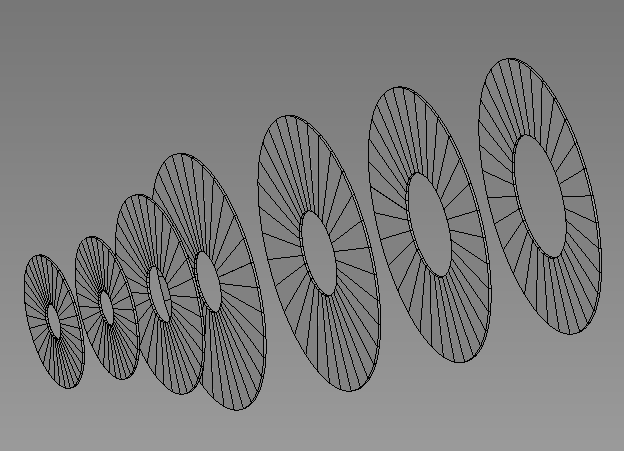|
 Time stamping Time stamping
In the ILC nearly 3000 will occur each millisecond. To distinguish the particles from rare signal topology from the underlying background, a precise time stamp should be established. This implies that for all particles - including those with low-momentum or emitted at a small angle - at least one sub-detector should present sufficient time resolution to unambiguously and redundantly identify the bunch crossing.
The capability of different detector technologies to provide a precise "time stamp" differs greatly. While some detector technologies naturally provide and unambiguous identification of the bunch crossing, others integrate up to 100 bunch crossings or more. The latter is true in particular for most of the currently proposed vertex detectors.
For charged particles in the forward tracker of the Large Detector Concepts space points are measured in several sub-detectors. The vertex detector provides at least three space points. The TPC acceptance extends out to polar angles of well below 20 degrees. The combination of several measurements in the silicon inner tracker (vertex detector plus innermost Forward Tracker Disks) with the TPC hits yields a precise time stamp. This overlap with the TPC somewhat relaxes the time-stamping requirement on the innermost tracking disks.
Tracks at even smaller angles, or at small transverse momentum, only leave hits in the vertex detector and forward tracking disks before leaving the tracker volume. For the smallest polar angles, only FTD hits are available. To unambiguosly identify the bunch crossing these low-angle particles belong to, the FTD should provide a precise time stamp. This class of particles traverses virtually all FTD layers. Redundant coverage and complete acceptance can therefore be achieved by equiping two disks with time-resolved readout.
Discussion
In the LDC baseline design the first three forward disks are equiped with pixel detectors, while for the final four measurement the baseline design relies on (double-sided) micro-strip detectors. Micro-strip detectors naturally provide a precise time-stamp. Therefore, this design fulfills the time-stamping requirement even if the pixel read-out of the first disks integrates more than one bunch crossing.
Home
Next Article
|